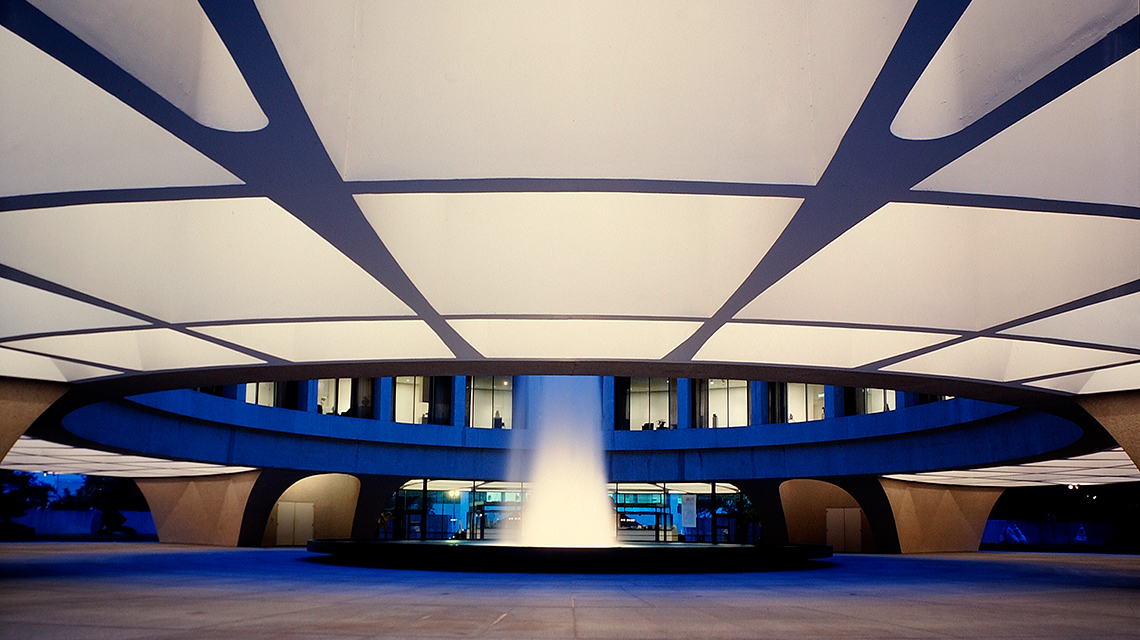Hirshhorn Joins National Cherry Blossom Festival in Celebrating Japanese Culture with the First Career Survey for Artist Hiroshi Sugimoto

Wednesday, March 1, 2006
Media only:
Donna Drew Sawyer, Dir. Communications & Marketing, sawyerd@si.edu
Gabriel M. Einsohn, Communications & Marketing Specialist, einsohng@si.edu
Public only:
www.hirshhorn.si.edu, (202) 633-1000
The Hirshhorn Museum and Sculpture Garden joins the National Cherry Blossom Festival in celebrating Japanese culture with “Hiroshi Sugimoto,” the first career survey of one of Japan’s most important contemporary artists from Feb. 16 through May 14. Sugimoto (b. 1948, Tokyo) is known for his starkly minimal series of seascapes, movie theaters and architecture, as well as his richly detailed photographs of natural history dioramas, wax portraits and Buddhist sculptures. These celebrated series explore such essential concepts as time, space, culture and perception-even the nature of reality itself. “Hiroshi Sugimoto” features 120 photographs from 1976 to the present. This retrospective of the artist’s 30-year career is co-organized by the Hirshhorn and the Mori Art Museum, Tokyo; Hirshhorn director of art and programs and chief curator Kerry Brougher and Mori director David Elliott are co-curators of the exhibition.
The exhibition at the Hirshhorn features unique installations developed in close collaboration with the artist-exemplifying Sugimoto’s fascination with creating dramatic spatial environments. Works from the “Dioramas” series offers deceptively realistic scenes that appear to show animals in their “natural” habitat but were, in fact, shot at natural history museums. His “Portraits” series seemingly presents famous historical figures as if they had just posed for the artist, but the works are actually photographs of wax models from Madame Tussauds wax museum in London.
A large, dramatically lit gallery features works from Sugimoto’s “Seascapes” series. Sugimoto composed all of these photographs with the same proportion of sea and sky, without any hint of land or human presence. Although the photographs were taken at different points around the globe, their minimal rectangular fields suggest a timeless balance-a continuity of composition that shows the horizon line where sky meets sea. Like the “Seascapes” series, the “Theaters” series contains rectangles of light-in this case the white, glowing screen of richly detailed movie theaters and drive-ins. To create these photos, Sugimoto left the shutter of his camera open throughout the entire screening of a film, compressing the experience of watching a film and raising questions of presence and absence. Also included in the exhibition are the artist’s “Architecture,” “Conceptual Forms” and “Sea of Buddha” series, as well as “Colors of Shadow,” which reveals Sugimoto’s recent interest in color photography.
Born in Tokyo in 1948, Sugimoto left Japan in 1970 after graduating from Rikkyo University with a degree in economics. He traveled throughout the Soviet Union and Europe and then moved to Los Angeles, where he studied photography at Art Center College of Design. He moved to New York in 1974 and currently divides his time between New York and Tokyo. Sugimoto’s work has been exhibited in group and solo shows internationally.
On March 30 at 8 p.m. Hiroshi Sugimoto will perform as “benshi,” narrating the beginning and epilogue of Kenji Mizoguchi’s early cinema masterwork “The Water Magician,” 1933. The silent film will also be accompanied by shamisen music performed by Kenta Nagai. This film is part of Hirshhorn After Hours, an evening of art and cocktails celebrating Hiroshi Sugimoto and his work. This event is free, begins at 5:30 p.m. and is open to the public. For more information, visit www.hirshhorn.si.edu or call (202) 633-1000.
A fully illustrated 368-page catalogue, co-published by the Hirshhorn Museum and the Mori Art Museum in association with Hatje Cantz, Germany, accompanies the exhibition. The catalogue chronicles the works on view in the exhibition and Sugimoto’s entire career and includes essays by curators Kerry Brougher and David Elliott, as well as the artist himself.
Coinciding with the exhibition at the Hirshhorn will be the Smithsonian’s Arthur M. Sackler Gallery’s “Hiroshi Sugimoto: History of History” April 1-July 30, an exhibition featuring ancient and medieval Japanese artworks from Sugimoto’s personal collection.
The National Cherry Blossom Festival®, Washington, D.C. is an annual two-week, city-wide event featuring daily cultural performances by local, national and international entertainers. Other events include art exhibits, fireworks, tours, arts & crafts demonstrations, sports competitions and special events celebrating spring. The 2006 festival will be held March 25 – April 9 and is highlighted by the Family Day & Opening Ceremony on Saturday, March 25; and the Southwest Airlines Presents the Parade of the National Cherry Blossom Festival® and the Sakura Matsuri – Japanese Street Festival on Saturday, April 8. The 2006 National Cherry Blossom Festival® celebrates the 94th Anniversary of the gift of the cherry blossom trees and the enduring friendship between the citizens of the United States and Japan. Visit www.nationalcherryblossomfestival.org.
The Hirshhorn Museum and Sculpture Garden, the Smithsonian’s museum of international modern and contemporary art, has some 11,500 paintings, sculptures, mixed media installations and works on paper in its collection. The Hirshhorn maintains an active and diverse exhibition program and offers an array of free public programs that explore the art of our time. The museum, located at Independence Avenue and Seventh Street S.W., is open daily from 10 a.m. to 5:30 p.m. (closed Dec. 25), and admission is free.
# # #